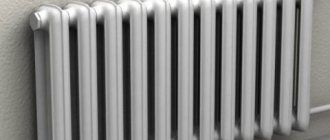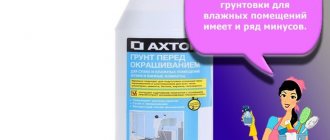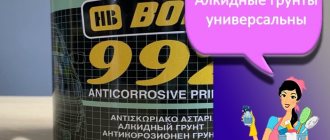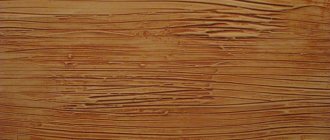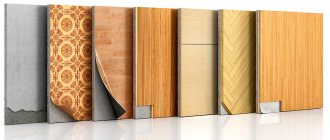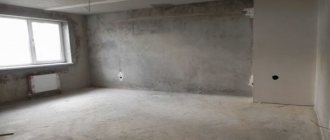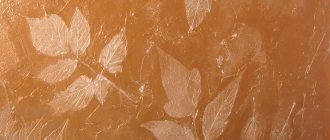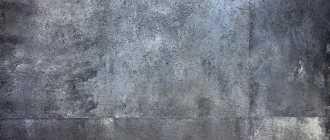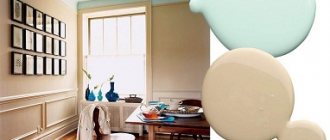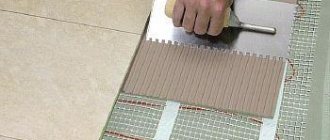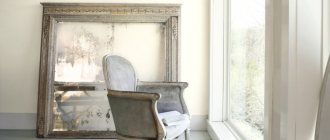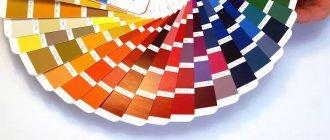Updated: 04/23/2021 15:30:07
Expert: Konstantin Borisovich Polyakov
*Review of the best according to the editors of expertology.ru. About the selection criteria. This material is subjective in nature, does not constitute advertising and does not serve as a purchase guide. Before purchasing, consultation with a specialist is required.
Plaster mixtures are widely used in the construction industry. If earlier this material was used exclusively for leveling walls and ceilings, today some compositions are used for decorative finishing. Accordingly, the range of plasters has expanded. Today it is already difficult to find builders who prepare their own cement-lime mortars. They have been replaced by innovative developments that simplify not only the preparation of the solution, but also the application and leveling. Once in a construction supermarket, an ordinary person can easily get confused. In order not to make a mistake in choosing plaster, it is worth getting acquainted with the recommendations of specialists.
Criteria for choosing plaster
- First of all, the master must approximately determine the thickness of the leveling layer. Most often, plaster is used when there is a deviation from the ideal of at least 3 mm. It is possible to plaster large uneven areas in several layers, but due to prolonged drying of the surface, precious time is lost. In this case, you should pay attention to the maximum permissible thickness of one layer.
- When choosing a composition, it is important to consider the type of base. If almost any plasters go well with concrete bases, then for gypsum-containing bases you will have to carefully select the mixture.
- Some types of plasters can be used to prepare the surface for laying tiles, while other solutions allow you to create modern decorative surfaces.
- Not all plasters retain their qualities equally well in dry rooms and outdoors. If a wide range of compositions is suitable for interior work, then for finishing external bases it is better to buy products that are resistant to moisture, frost and ultraviolet radiation.
- Plasters also differ in composition. Cement mixtures are good for outdoor work; they are the most affordable. Gypsum plasters dry quickly; their scope of application is usually limited to dry rooms. Synthetic compounds have become the most expensive. They give the master a wide field for activity.
Our review included the best plasters. When compiling the rating, the following criteria were taken into account:
- appointment;
- composition of the product;
- price;
- expert opinion;
- consumer reviews.
Leveling the walls in the bathroom
On the modern construction market there is a wide selection of materials that are suitable for leveling walls in rooms with high humidity. There are, of course, differences in technology of use, methods of application, and also in price. You can choose different types of plaster: leveling with plasterboard, using special mixtures and using plasters. Let's take a closer look at plastering. In order for the alignment process to proceed efficiently, certain rules must be followed. Of course, before starting work it is necessary to prepare the surface. And these works should be carried out taking into account the material from which the wall is made.
- If the material of the walls in the bathroom is brick, then the preparation consists of the following stages. First of all, the surface is cleaned from dust and debris. Then you need to make notches on the surface using a chisel. They will increase the level of adhesion between the surface and the plaster material. The depth of such notches is usually 10 - 15 mm.
- If the walls in the bathroom are stone, then before applying notches it is better to thoroughly treat the surface with a wire brush.
- Concrete walls in the bathroom are also cleaned of dust and remnants of previous finishing. Then they make cuts about one centimeter deep and about two centimeters long. Then wipe well with a damp cloth and dry before starting work.
- If the walls in the bathroom are wooden, then preparing them before plastering involves filling the surface with special shingles. Stuffing is done in the form of a grid. To begin with, the shingles are piled diagonally across the site. The next layer is placed at right angles to the existing layer of shingles. The step between the applied elements is about 10 cm. Small nails are used to attach the shingles.
- An alternative to shingles is a reinforcing mesh with cell sizes of 4x4 cm.
Bathroom walls with a vertical level difference of about 10 cm or more are best plastered using beacons. Lighthouses can be either metal or wooden. Slats can act as wooden beacons. First, you need to use the same plaster or alabaster to fix the slats on the surface of the walls in a level. They are fastened at a distance from each other equal to the width of the rule that will be used when tightening the plaster.
They begin to mount the first beacon at the highest point, and then, maintaining both horizontal and vertical levels, place the rest.
Important! If metal beacons were used, then after the process of leveling the walls and the plaster has completely dried, the beacons must be removed. Traces of the presence of lighthouses are smoothed over with plaster.
After preparing the surface in the bathroom, you can begin the plastering process. It is better to carry out this process in two layers, especially if the level difference is large enough. First, rough plastering is carried out, then the walls are finished perfectly. We should not forget that before applying each layer of plaster it is necessary to carry out a priming process. For beginners, of course, it is difficult to cope with such work. But it all depends on the training.
Advantages and disadvantages of various types of plasters
| Type of plaster | Advantages | Flaws |
| Cement | + low price + weather resistance + vapor permeability of the coating | - used only for leveling bases - insufficient elasticity |
| Plaster | + plasticity + quick drying + can be used for decorative purposes + thick layer | - afraid of atmospheric influences - does not withstand mechanical stress |
| Synthetic | + plasticity + versatility + high adhesion + decorative | - high price - low vapor permeability - gets dirty easily |
DAW SE (Caparol)
German brands have long been not uncommon in the production of products for repair and finishing work, and another representative of them on our list is the DAW SE (Deutsche Amphibolin-Werke) , which represents the Caparol .
The company's products include a large number of items in various categories. So, if you are planning to remodel your work or living space, then with a high degree of probability you will find everything you need from this manufacturer. The brand also wins its favor because it promotes a partnership policy, focusing primarily on the client, helping not only by providing high-quality products, but also possible solutions to certain problems. The plaster of this brand has a large number of advantages, including weather resistance, environmental friendliness, and high strength combined with good ductility. It is good for use in many areas. True, the only objective drawback may be its high cost.
Official website: caparol.ru
Rating of the best plasters
| Nomination | place | Name of product | Rating |
| The best cement plasters | 1 | PLITONIT T1+ | 4.9 |
| 2 | Knauf Grünband | 4.8 | |
| 3 | Weber.vetonit TT40 | 4.7 | |
| 4 | Ceresit CT 29 | 4.7 | |
| 5 | Kreps Master | 4.6 | |
| 6 | KM Profi with reinforcing fiber | 4.5 | |
| The best gypsum plasters | 1 | Knauf Rotband | 4.9 |
| 2 | Vetonit Profi Gypsum Reinforced (Weber.Vetonit) | 4.8 | |
| 3 | VOLMA Layer | 4.8 | |
| 4 | Ceresit CT 35 | 4.7 | |
| 5 | Unis Teplon | 4.6 | |
| 6 | Founds Gipswell | 4.5 | |
| The best plasters based on synthetic resin | 1 | Caparol Streichputz | 4.8 |
| 2 | Mapei Nivoplan | 4.7 |
Reviews of gypsum plaster brands
Review No. 1: Alexey, apartment finishing specialist. We work more with “Volma” or “Starateli” plasters. We use it to level walls without reinforcing mesh. Customers did not complain about the appearance of cracks, peeling or other defects. We value reliability and quality at a low price. We tried more expensive brands, but didn’t feel much effect, so we settled on these options.
Review No. 2: Vladimir, I did the renovations in the apartment myself. I decided to plaster the walls in the living room myself with wallpaper. I chose Osnovit PG25 plaster. It is applied normally, the surface becomes smooth after hardening. I didn’t buy putty, I lightly walked over the surface with a float. No unevenness is observed after pasting with non-woven wallpaper.
Review No. 3: Sergey, he was decorating a house from blocks. There were big differences in some places, so I was looking for durable plaster. As the technical characteristics show, the Unis “Teplon Universal” gypsum mixture has a compressive strength of more than 5 MPa, is easy to apply, is resistant to cracking, and is also inexpensive.
Review No. 4: Vasily trusts only well-known brands. When I hired a team to decorate a country house, I asked them to use only high-quality materials from well-known companies and not to skimp on the work. To level the walls I asked to use Knauf Goldband gypsum plaster. I liked the characteristics, it is produced by a large concern.
Review #5: Andrey, he leveled the ceiling itself. All the rooms were gradually put in order, but the hallway had not been renovated for a long time. They didn’t want to take the panels, so they had to level the ceiling. We took Glims TS-70 plaster, it was recommended by familiar builders. Before application, we used a primer from the same company. Everything is in order, no defects were found. The advice of the masters turned out to be practical.
The best cement plasters
The main purpose of cement plasters is to level internal and external substrates. After drying, a durable coating is formed that is resistant to water, frost and sunlight. Experts selected several compositions popular in Russia.
PLITONIT T1+
Rating: 4.9
PLITONIT T1+ plaster is a cement-containing composition to which water-repellent components and reinforcing fibers have been added. The mixture can be used to level internal and external substrates. Experts highly appreciated the versatility of use; the plaster holds excellently on concrete, brick, and aerated concrete surfaces. The material is deservedly recognized as the winner of the rating. It has good adhesion, is easy to apply, and does not form cracks after drying.
Finishers speak positively about the viability of the prepared solution (240 minutes) and the wide range of thicknesses (from 2 to 30 mm). Plaster can be applied manually or using mechanical means.
Advantages
- wide range of thicknesses;
- low consumption;
- moisture resistance and plasticity;
- applied manually or by machine.
Flaws
- not detected.
Knauf
In one of our previous articles where we looked at the most popular primer manufacturers present on the Russian market, there was a wonderful German brand Knauf .
And it so happened that he (like some others) managed to get on this list. This, however, is not too surprising, since building mixtures are a broad category, and if one company produces one of the types, there is a high probability that it also produces the rest. Naturally, it makes no sense to describe its history in detail once again, but it is worth recalling that the products of this brand have been on the Russian market for more than 25 years, which definitely indicates their high quality and sufficient popularity. The company provides very profitable options for finishing houses and apartments, since the porous structure and the presence of polystyrene foam granules provide the plaster with good thermal insulation properties. In this case, the composition is homogeneous and is extremely easy to apply to the substrate.
Official website: knauf.ru
The best plasters based on synthetic resin
The most modern types of plasters are compositions based on synthetic resins. The mixtures are easy to prepare, apply and level. Synthetic plasters are often used to decorate walls and ceilings. Here are some quality products.
Caparol Streichputz
Rating: 4.8
Caparol Streichputz matte plaster allows you to create thin-layer and weather-resistant coatings of high quality. The German composition is based on synthetic resins; the material can be diluted with water to the desired consistency. Experts gave the material the palm for its wide range of applications. With the help of a plastic mass, it is possible not only to level the bases, but also to produce various types of modern finishing (mosaic spraying, imitation sgraffito).
The qualities of the plaster such as strength, environmental friendliness, low odor, and lack of cracking after drying received high marks from professional builders. The mixture is easy to apply and level.
Advantages
- weather resistance;
- strength and ductility;
- environmental friendliness;
- wide scope of application.
Flaws
- high price.
Mapei Nivoplan
Rating: 4.7
Experts attribute reasonable price, good adhesion and high elasticity to the strong qualities of Mapei Nivoplan synthetic plaster. Therefore, the composition has proven itself to be a universal material that allows not only to level external and internal substrates. Using the mixture, it is possible to restore plastered surfaces and prepare walls for laying tiles. The elasticity of the solution combined with good adhesion allows it to be applied to the ceiling. The thickness of one layer is limited to 30 mm.
Before starting work, it is important to properly prepare the dry composition by mixing it with water. Plaster is not suitable for leveling gypsum-containing substrates. These properties did not allow the material to become the winner of the rating.
Advantages
- versatility of use;
- affordable price;
- good adhesion.
Flaws
- rarely found in the retail chain;
- not suitable for plaster surfaces.
Which plaster is better to buy
There is no universal solution. Typically, plaster is chosen based on its purpose. The gypsum mixture is used to cover walls and ceilings in office and residential premises where there is heating. But at high humidity, this option is no longer available; in this case, a cement composition is used. This type of plaster takes longer to dry and requires reinforcement when applied in a thick layer. Cement-lime plaster comes to the rescue when you need to refine a façade or other external surface.
- When asked which gypsum plaster is best for finishing dry rooms, the craftsmen answer immediately. The Prospector mixture is economical to use and easy to apply.
- Among cement compositions, Ceresit CT 24 Light is often chosen. It is universal, suitable for exterior and interior decoration.
- The most popular cement-lime plaster is Perfekta FrontPro. It is easy to apply and inexpensive.
- Odorless gypsum plaster – Volma Layer;
- A mixture that allows you to achieve a snow-white color of walls - Unis Teplon.
Before finishing, the walls are cleaned of dirt and dust using a special solvent. If it is difficult to make a choice, it is better to consult a specialist or seller. He will tell you what to buy and in what quantity.
